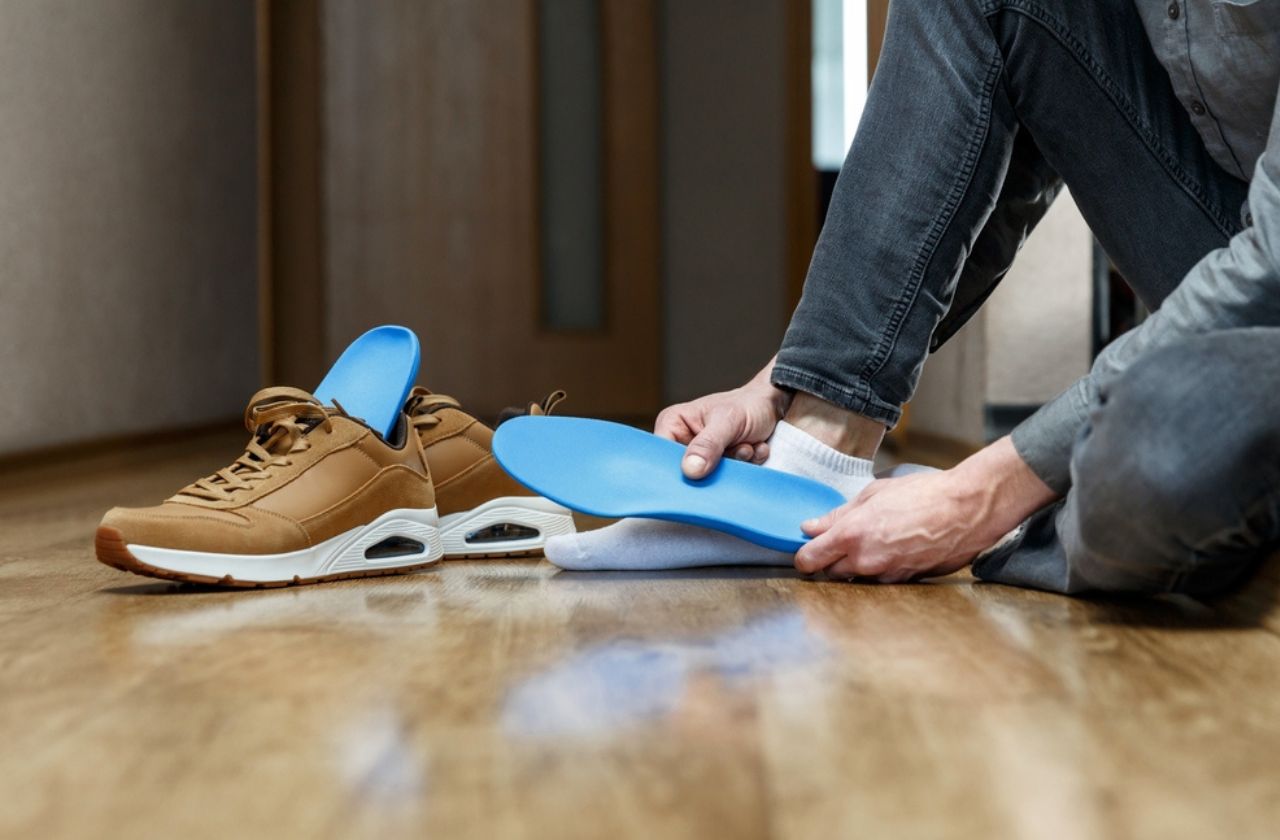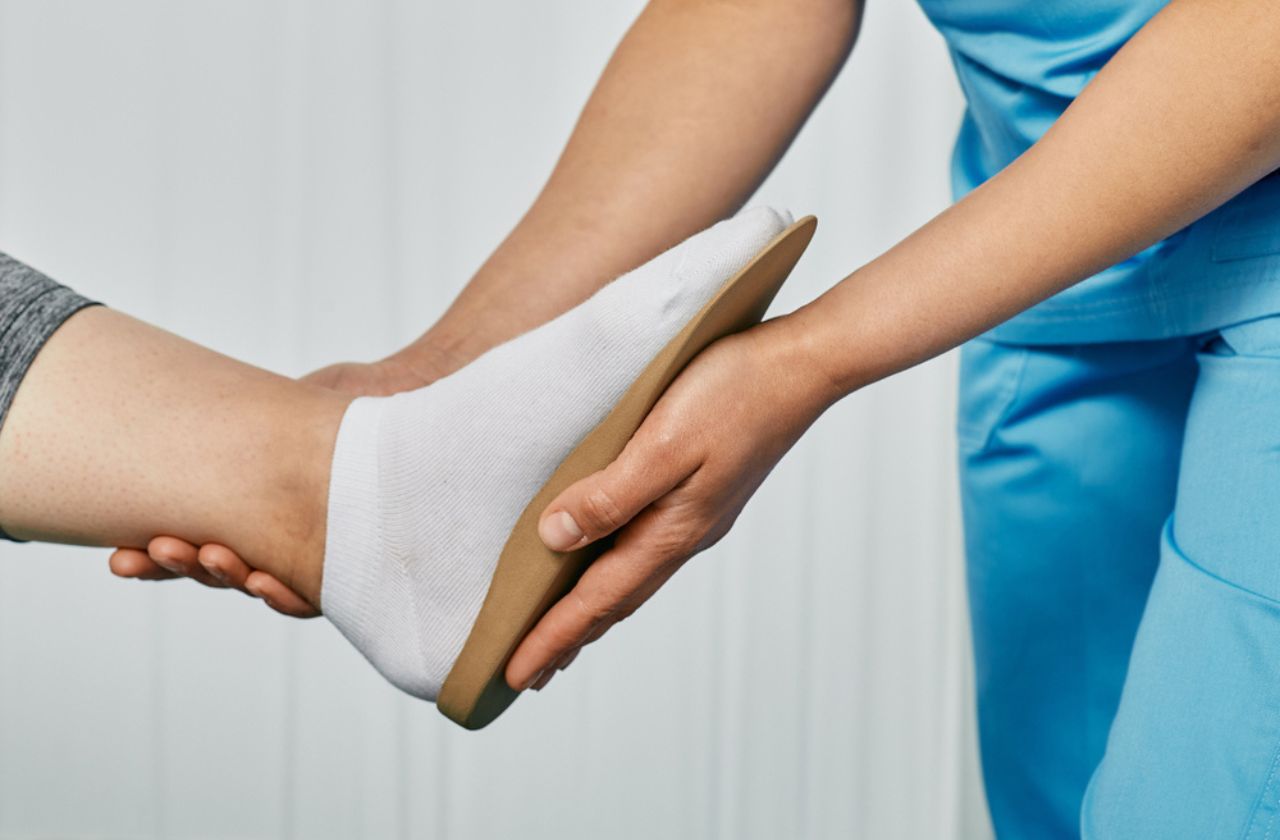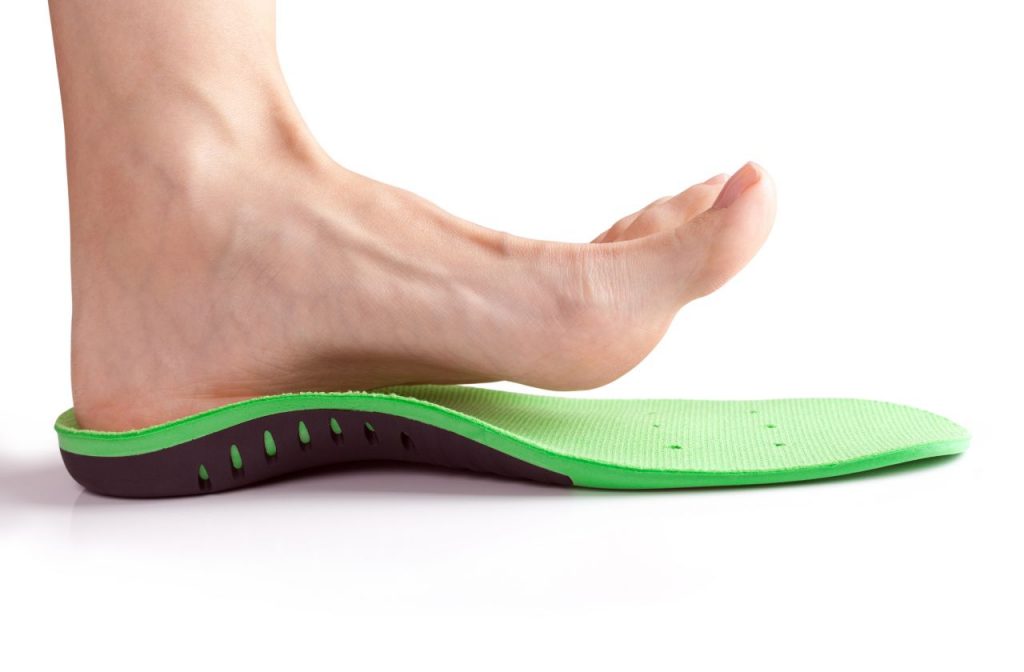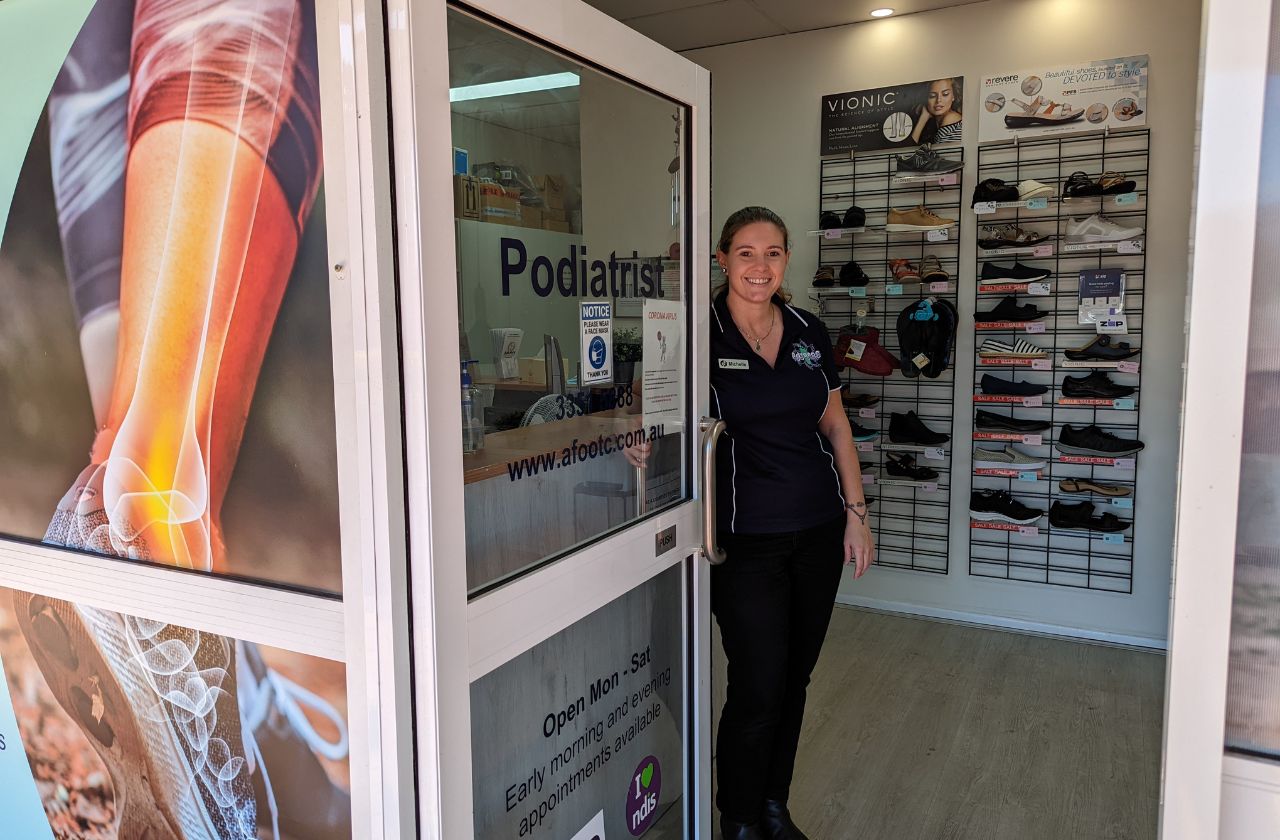Formthotics
Formthotics are our podiatrists’ choice of prefabricated or ‘pre-made’ orthotics. Prefabricated orthotics might also be referred to as ‘off the shelf’ orthotic devices or by any number of branded names. The brand we have chosen to supply for our patients is ‘Formthotics’. Formthotics are high-quality, moldable and adjustable prefabricated orthotic which can be suitable for a wide range of patients and conditions.

What is the difference between Formthotics, orthotics and orthopaedic insoles?
A number of conditions require treatment by using orthotics, however shopping for orthotics can be a confusing and daunting task. There are a lot of different terms like ‘custom orthoses’, ‘prefabricated orthotics’ and ‘orthotic inserts’ which can all mean different things and are also very commonly used incorrectly by the general public, marketers and some health-care providers. The safest way to ensure you are getting a proper and suitable orthotic device is to see a registered podiatrist (all podiatrists in Australia must be registered through AHPRA).
In general, the different types orthotics can be broken down into three main categories:
1. Custom orthoses/orthotics
- Our podiatrists would consider these a ‘true orthotic’
- Custom orthotics always involve a scan or cast of your feet; this may be done using plaster, a 3D scanning machine, or sometimes even a device like an iPad. At Advance Foot Clinic we use a specially designed ‘LaserCam’ stand-alone scanning machine which is the gold-standard device recommended by our orthotic manufacturer to produce the most accurate scans and orthotics.
- Custom orthotics are made for your feet and no-one else. They are a medically prescribed device which have been made using a negative cast/scan of your actual feet.
- Only registered podiatrists and orthopaedic specialists can prescribe custom orthotics.
- Due to this process, custom orthotics are usually the more expensive type of orthotic.
- Needed to treat more severe pain, deformity and chronic conditions.
2. Formthotics / prefabricated orthotics
- Still a podiatrist prescribed orthotic device, though some physiotherapists will offer them.
- Does not involve a cast or scan of your feet.
- Comes pre-made from the manufacturer designed to fit the average foot in sizes ranging from XXS to XXL.
- Formthotics are heat-moldable – therefore they can be shaped from their basic position to better suit your feet.
- A cheaper orthotic as they are not made custom; however, this does mean they won’t fit everyone’s feet, just the ‘average’ majority.
- Can be modified and reinforced by a podiatrist in-clinic.
- Are suitable for less severe foot types, deformities and conditions.
3. Orthopaedic insoles / orthotic shoe inserts
- Despite what they may be called on some retail packaging, these inserts are not an ‘orthotic’ – orthotics are a podiatrist prescribed device which cannot be bought in a retail store.
- May or may not provide any support to the feet – often more of a cushioning insole.
- Can be made of various materials including plastic, foam and gel.
- Available in pharmacies, footwear retailers and online.
- Do not resolve pain for the majority of people.
Who can Formthotics help?
As we learned above, Formthotics are not suitable for every patient; however for those patients experiencing a foot or lower limb condition which is mild to moderate in severity, Formthotics can be an affordable and effective alternative to custom orthotics.
When you see one of our podiatrists they will assess your lower limbs and feet for flexibility, structure, shape, arch profile, symmetry and deformities. These assessments will give your podiatrist information about the level of biomechanical correction or support you require. Simply put, the more support and correction you need, the more likely you are to need a fully custom orthotic. If your podiatrist determines you only need fairly average or ‘mild’ support, they may recommend a Formthotic as your first-line treatment option.

What conditions do Formthotics treat?
Formthotics can treat a large range of foot and lower-limb conditions. Generally speaking, they will help with more mild and less chronic versions of the same conditions custom orthotics treat:
- Mildly symptomatic flat (overpronated) feet
- Plantar fasciitis
- Heel pain
- Posterior tibial tendon dysfunction (stage 1 only)
- Bunions
- Corns, ulcers and callus needing cushioning
- Foot and knee Osteoarthritis
- Ankle instability
- Hypermobility
- Morton’s neuroma and neuritis
- Sinus tarsi syndrome
- Achilles tendinopathy
- Sever’s disease (calcaneal apophysitis)
- Shin splints (medial tibial stress syndrome)
- Osgood–Schlatter disease and Sinding Larsen Johansson syndrome (children’s knee growing pains)
What will getting Formthotics look like?
To get a prescription Formthotic, the first step is to see a podiatrist. Your podiatrist will advise you if Formthotics are suitable for you. If they are recommended, the steps to getting a Formthotic made for you are quick and easy.
Appointment 1
Biomechanical Assessment and Formthotic heating
What will happen at this appointment?
Your podiatrist will conduct a biomechanical assessment. During this they will examine the position and motion of the joints in your feet, legs and hips. Your podiatrist will use a visual gait analysis to identify any abnormalities that they may want to account for and correct.
The podiatrist will then fit you with a suitable sized Formthotic. This process involves fitting the Formthotic to the shape of your feet and footwear, then heating and moulding the Formthotic against your feet. Your podiatrist may also make some marks of your feet which can then be transferred onto the Formthotic to add modifications later in the right location. Funnily enough, the old podiatrist trick is using lipstick to do this, as it transfers very neatly!
Your podiatrist will then keep the molded and marked Formthotic at the end of your appointment so that they can work on it before your next appointment.
This appointment will take approximately 40 minutes.
What do I need to bring?
- Bring the shoes you intend to put your Formthotics in.
- Wear unrestrictive clothing. Your podiatrist will need to be able to see your body’s range of motion.


Appointment 2
Formthotic Dispense
What will happen at this appointment?
About a week after your biomechanical assessment and Formthotic heating appointment, your modified Formthotics will be available for collection. Your podiatrist will have added a top cover and any required dorsal additions, arch reinforcement, heel wedging or heel raises to your Formthotics.
You will be asked to walk with the Formthotics in your footwear to test your comfort, and given instructions on how to wear them in.
This appointment will take approximately 30 minutes.
What do I need to bring?
- The shoes you brought to your first appointment.
- Again, wear unrestrictive clothing. Your podiatrist will need to assess the impact of your orthotics as you move.
Appointment 3
Orthotic Review
What will happen at this appointment?
A few weeks following your Formthotic dispense appointment, it is essential you return to your podiatrist for a review. At this stage, your Formthotics should be worn in and any issues that are likely to persist can be identified and addressed.
In addition, your podiatrist will reassess your posture and gait with the Formthotics. This will allow them to make any further adjustments to optimise your outcome.
Your podiatrist will recommend the appropriate time for your next Formthotic review.
This appointment will take approximately 30 minutes.
What do I need to bring?
- Your Formthotics.
- The shoes you are wearing your Formthotics in.


How do I go about getting Formthotics?
The first step towards getting Formthotics is to speak with your podiatrist. We have friendly podiatrists in five locations around Brisbane and Mount Isa who are highly trained in providing biomechanical assessments and Formthotics.
Call 1300 76 33 66 or Book Online.
Take the first step towards happy and healthy feet.
Ready to give your feet the care they deserve? Book your appointment online or call us and experience our expert podiatry services at any of our five clinic locations.
